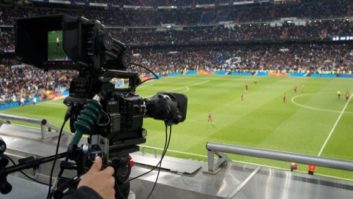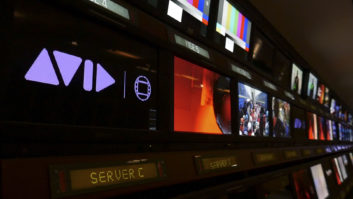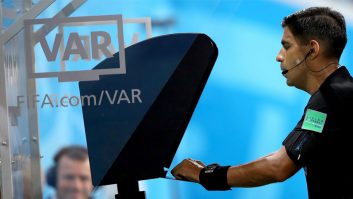Next weekend the National Basketball Association (NBA) will make a bit of sports technology history when it undertakes the challenge of a 3D high definition TV production that will be seen by fans at the Mandalay Bay Hotel in Las Vegas. The game itself will be played at another location in Las Vegas, writes Ken Kerschbaumer.
While the bandwidth demands (roughly 40 Mpbs) won’t allow for distribution over traditional TV broadcast means the goal of the project is to lay the groundwork for NBA 3D HD viewings in digital cinemas and arenas around the country during the NBA Championship Series in June. “The NBA is always exploring new and innovative ways for fans to experience the excitement of our game,” said Steve Hellmuth, senior vice president of Operations and Technology for NBA Entertainment. “The spectacular view of our game from a courtside seat, the closest to the field of play in any sports, is replicated in this groundbreaking 3D HD experience we are unveiling for NBA All-Star.”
The production will involve five cameras (although each camera contains two Sony HD 1080i cameras, one for the left eye and one for the right eye) with four cameras located along the side of the court to give viewers the sensation of sitting in the first row.
The camera and projection technology was developed by PACE, the same developer of the 3D technology being used by James Cameron. The NBA was exposed to the system during a demo in Las Vegas last April during NAB and quickly signed on for a test during a Los Angeles Lakers/Phoenix Suns playoff game.
A little more than eight months later its ready for the live test and, unlike conventional 3D technologies is not about making the viewer feel like they’re on a thrill ride. Instead the emphasis is on creating a depth of field that makes the viewer feel as if they are actually viewing a game live.
“The thing that makes this spectacular, and why it wowed us, is the fact that the cameras can change the ocular point of convergence so it’s a natural experience that can bring you into the picture,” said Hellmuth.
In fact, that ocular convergence will require a second operator at the camera. While one operator controls the basic functions the ocular convergence operator will control the depth of field and where the subject is within that field.







